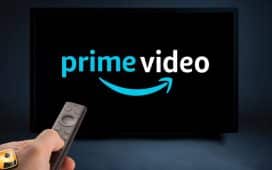Last Updated on February 15, 2022
Earlier this week, Dish Network introduced Sling TV, designed to give cable and satellite customers who’ve either already cut the cord or are about to do so some new options for a lower monthly fee.
Sling TV, The New York Times reports, provides live and on-demand TV delivered via an Internet connection to television sets, computers and mobile devices.
It sounds like a Netflix-style proposition, which isn’t necessarily a bad thing.
Customers pay $20 per month for a dozen of the most popular cable networks, which include ESPN, the Disney Channel, Food Network, HGTV, TNT, TBS and CNN.
Add-on packages, for $10 a month, would add specific genres like children’s TV networks or news.
The broadcast networks — ABC, CBS, Fox and NBC — aren’t included.
While I understand it’s part of an ongoing effort to reach “cord cutters,” those who are increasingly dropping cable and satellite because they feel those services don’t offer what they should for the money they charge, this apparent attempt in a direction of a la carte programming may be worth watching, but may not accomplish what people hope it will.
What’ll It Really Cost?
Unless everything you watch happens to be on the channels in the $20 package, you’ll never get away with paying $20 per month to replace your cable or satellite service.
I rarely watch CNN and almost never watch TNT or TBS these days. I don’t even know where Disney Channel, Food Network and HGTV are on my cable lineup.
And don’t even get me started on ESPN: I’m not a sports fan, yet I, along with everyone else, pays more to ESPN than any other cable network as part of my cable payment each month. Every time local stations get into a skirmish with one provider or another, leaving viewers facing temporary blackouts and then fuming that a station would dare ask for an average of $1 per month of a subscriber’s fee, those same subscribers are forking over more than $5 of those fees to ESPN.
I don’t watch ESPN. If technical difficulties knocked it off my system, I’d have absolutely no idea until I listened to sports fans I know or work with freaking out about it.
Yet I’m paying an estimated $5.54 for it. And dropping it from my lineup, and saving that $60 per year (or using it to pull in a channel I’d rather watch) isn’t an option.
So no matter which route I go, I’ll be forced to pay for channels in which I have no interest.
A move like this also threatens the smaller genre networks. Two of the nets I watch most often are TV Land (when it isn’t running a handful of thoroughly awful shows with which it is inexplicably obsessed, like Roseanne and The Nanny) and Investigation Discovery, which focuses on true crime and forensic documentaries.
How far down on the bundles list would I have to go to get to those channels, if they’re there at all?
And what are the odds, if I actually were to spot those channels, that they’d both be in the same bundle? Probably slim.
So that’s $20 for the basic service, plus $10 each for two bundles. I’m up to $40 per month.
Then there are my local channels. You have to protect the local channels because they’re the ones investing in the community.
Cable and satellite services, last time I checked, charge something like $12-15 per month for local services only.
That takes me up to $52.
If I happen to find individual shows on Netflix from cable networks I don’t want to pay for by Sling TV bundle, I’ll keep my Netflix subscription. That takes me up to $60.
In my apartment community, we have cable for $40 per month that gives us everything except the premium channels. I’m already paying for Netflix on top of that, but right there, assuming I could ditch Comcast in favor of Sling TV, I’d be paying $12 more per month for fewer channels.
And if I were paying full price for cable, I might be saving only about $15 per month or so. Is that worth the trouble? And for some people, who are under contracts that charge cancelation fees, is it even a wise option?
Paying a Little Less for a Lot Less
The success of cable and satellite have relied since day one on the lineup.
Younger readers will have to trust me on this, but most of you who are reading this remember quite well a time in which we had three, four or five channels on the dial (that was actually a dial) and yet we somehow always found something to watch.
Cable entered the mainstream in the late 1970s, promising dozens of channels to watch. That was back when HBO only broadcast from about 5pm into the overnight hours, then signed off for the rest of the day.
We’ve had it drilled into us for more than a generation now that we need all those channels, no matter how few channels we actually watch.
If you’re like me, you probably watch about 10% of the channel options your lineup actually gives you.
And after all that conditioning, are we not going to resent, even a little, suddenly having those “hundreds” of channels taken away, even if we manage to pay less per month?
Are we not going to feel shafted in that deal?
What about the rest of the lineup?
And here’s the other important point when it comes to any attempt at a la carte channels: let’s say your favorite cable channel isn’t one of the big dogs like ESPN, but rather, one of the smaller players that offers a complete broadcast day of niche programming.
You may already know you’re in the minority in your enjoyment of such specialty programming.
But the channel is still bringing in revenue for two reasons: first, it likely gets a share, even if it’s only pennies per subscriber, for being on a cable or satellite lineup. Second, by being on a large lineup that every subscriber receives, it can boast to its advertisers a larger reach than it would otherwise have.
Either one of these would be good, but with the costs of programming rising year by year, both are necessary.
And when suddenly that niche network has to rely solely on the people interested in that niche, and sees a drop in the number of people actually willing to pay separately for it, at least partially because many people may never even have heard of that network, yet, that’s going to be a huge drop in revenue. And reach.
The sad reality is that some cable networks simply will not survive a la carte.
Maybe that’s a good thing, a kind of “survival of the fittest” in the broadcast spectrum.
Until you pick up the remote and see that there’s even less on the air that you want to watch.
How would that lower bill work for you then?

















